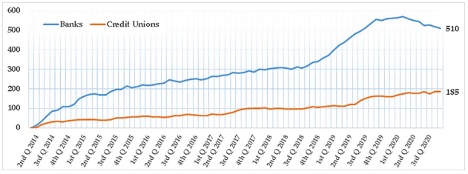Imagine waking up in the middle of the night and feeling pain go into your hands and feet. It’s so bad it feels like someone is stabbing you! The throbbing and penetrating feeling brings you to tears. It’s bad enough that the intensity is so painful, but imagine that this happens every night of your life now. This would send the strongest person into the worst of depression.
So what are you doing? Turn on your lights and grab the bottle of pain medication. Makes sense right? You try to open the bottle and only find that it feels like it weighs a thousand pounds !!! You struggle in frustration that the pain is preventing you from opening up something so small that should be easy. Finally, after minutes that feel like an eternity, the bottle is finally open. You grab some pills and swallow them like someone who hasn’t eaten in a month. Now sit and wait for the pain to stop! After an hour or so, it finally looks better and you are relieved that you can now try to get back to sleep. Morning comes and you feel tired and frustrated. Yes you could fall asleep but the quality was terrible. Your body feels like it has just done 10 laps with Mike Tyson. Worst of all, your stomach is knotted from the pain relievers. You feel miserable and hopeless !!
This is the reality for anyone with neuropathy or nerve pain, and they experience it on a daily basis. It is sad to hear and see that such a technologically advanced world still relies on pain relievers with unpleasant side effects. It would be great if they actually worked, but we hear from our patients that they are not even sure if anything is happening at all. So you are taking a drug that is not working and has side effects. Does that sound like a good offer now? We can fly a robot to Mars, but we can’t do enough research to find a better solution for people coping with neuropathy and nerve pain.
So the question is, why didn’t they? Is there anything better than antidepressants, anti-seizures, or opioids for neuropathic nerve pain?
How much money do you think is being made from neuropathic pain relievers? 1 million, 1 billion, what do you mean? The answer is a whopping $ 5 billion a year !!
So if drug companies are making $ 5 billion plus a year on these drugs, why should they invest in research or better alternatives for patients? From a business point of view, it doesn’t make sense. Neuropathy is not a condition that goes away; it is increasing at an alarming rate. There are so many causes of diabetes, chemotherapy, surgery, blood pressure and cholesterol medication, inflammation-related causes, and hundreds of other causes. If you look at the scope and size of these numbers, the market will only go up.
How does the pharmaceutical business balance the business of utility versus money? That is the question. Will Big Pharma continue to give people drugs that in many cases will eventually become ineffective? Is it okay to give patients drugs that cause other health problems? Unfortunately, the answer for these companies is yes. For them it’s about the money. They know their drugs have side effects, but it’s a small price to pay for them.
So how do you break out of this form? How do you take yourself out of the matrix and become a neo? The answer is CBD.
My specialty is neuropathy. CBD topicals have been a miracle for my patients. It made it possible for them to live again. They could replace their pain medication with cbd. You have reported so many great things about using the topical cream. Do I think CBD in other forms may be effective for neuropathic patients? The answer is yes. Personally, I did not take this route because our patient base is usually at high risk and takes a lot of medication. So we have to be very careful when introducing something new to our patients.
Can you imagine waking up in pain every day with no relief? We will never be able to understand the life of someone living in pain 24/7. So we have to do more. We have before us something so powerful with proven benefits. It has been shown to be superior to some of the pain remedies. I believe that CBD was placed on this earth for a reason. Regardless of your religious beliefs, I believe that CBD has a bigger purpose. The world is very sick and we are starting to see it more and more. It seems like life now is about instant gratification, not lifelong happiness. Happiness means being healthy and doing the things that you want to do on your terms. If we wait for the drug companies to research and find out that CBD is the holy grail, good luck. Knowing your story, you will find a way to mess it up.
So it is up to us as people, doctors and entrepreneurs to push the boundaries on all fronts. Our message must be clear and simple. The words that people hear and see must be based on common sense. CBD has very powerful anti-inflammatory and immunosuppressive properties. Inflammation is a complicated process that involves many signaling pathways. The body uses signaling molecules called eicosanoids to trigger the inflammatory response.
One of the ways CBD can reduce inflammation is by blocking an eicosanoid enzyme called COX2. NSAID drugs such as Advil and Aspirin also target COX2 in their mode of action. Wouldn’t it be great to get to the point where we all know 2 ibuprofen is that much CBD? That you could take it and not have the side effects. It is amazing that something that came from this earth can save your life. Is that a crazy thought or what ??
The science of CBD is clear. It creates balance in the body. Any type of pain is always a dysfunction of a chemical, structural, or neurological system. This is the methodology of how health problems typically arise. What does cbd do in general? It creates balance in the body. From a cellular point of view, when equilibrium occurs, repair also takes place. Now let’s take this concept to the next level. What if you can add other things to CBD? Adding amino acids or nutritional supplements to create better harmony in the body. Give your body everything it needs to function. What would happen then? Specific proteins are produced, nerve growth factors multiply, and cell repair begins. It is as if the seas parted before Moses. Life happens again. Life begins to become comfortable again for people. I’ve seen it over and over in my practice. Life without pain medication is possible. It just takes more people who think differently, talk about it, research, test, and push the envelope to get it into mainstream conversation. We have to be better than big pharmaceutical companies. Money is always part of the equation, but it doesn’t mean people are getting an inferior solution.
In the famous words of Jerry Maguire, “You complete me”. Let’s do more and be more with CBD.







